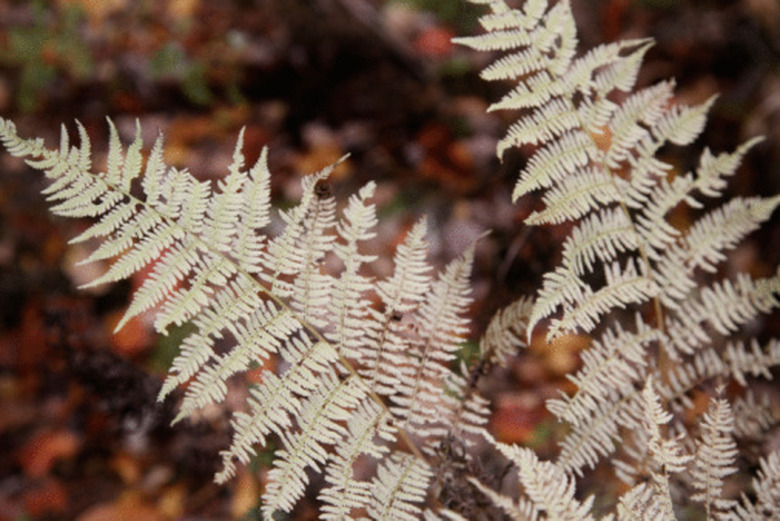How Are Conifers & Ferns Different?
Conifers and ferns share certain basic similarities: they photosynthesize, they reproduce sexually and so on. Despite their similarities, however, conifers and ferns also exhibit a number of differences.
Types
Types
Conifers are gymnosperms or "naked seed plants" in the phylum Coniferophyta. Ferns are non-seed plants in the phylum Pterophyta. The groups have different life cycles. Ferns produce spores that develop into gametophytes. Male gametophytes produce sperm, which fertilize eggs from other gametophytes. The zygotes then develop into adult plants called sporophytes. Conifers reproduce through pollination of ovulate cones that eventually develop seeds.
Features
Features
Conifers have woody stems and as a general rule are much larger than most ferns. Many conifers have needle- or scale-like leaves that are very different in shape and appearance from leaves found in ferns.
Geography
Geography
Many temperate forests are dominated by conifers like pine and Douglas fir. Ferns, by contrast, are most common in moist forests, tropical rain forests and acidic wetlands.
References
- "Biology"; Neil A. Campbell, Jane B. Reece, Lisa A. Urry, Michael L. Cain, Peter V. Minorsky, Steven A. Wasserman, Robert B. Jackson; 2008
Cite This Article
MLA
Brennan, John. "How Are Conifers & Ferns Different?" sciencing.com, https://www.sciencing.com/how-are-conifers-ferns-different-12435159/. 21 July 2017.
APA
Brennan, John. (2017, July 21). How Are Conifers & Ferns Different?. sciencing.com. Retrieved from https://www.sciencing.com/how-are-conifers-ferns-different-12435159/
Chicago
Brennan, John. How Are Conifers & Ferns Different? last modified March 24, 2022. https://www.sciencing.com/how-are-conifers-ferns-different-12435159/
